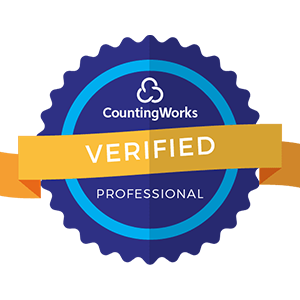
In today's rapidly evolving business landscape, change is not just inevitable; it's essential for organizations to remain competitive and thrive. Human Capital Management (HCM) initiatives, which encompass a wide range of processes and technologies related to managing and optimizing an organization's workforce, are no exception to this rule. Implementing new HCM initiatives can be a complex and challenging endeavor, requiring careful planning, effective communication, and strategic execution.
Change management, the process of guiding an organization through transitions and transformations, plays a crucial role in ensuring the successful adoption of new HCM processes and technologies. When done right, change management can help organizations overcome resistance, build buy-in, and achieve their desired outcomes. On the other hand, neglecting change management can lead to failed implementations, wasted resources, and a disengaged workforce.
In this article, we'll explore best practices for implementing change management in HCM initiatives, drawing from proven frameworks and real-world examples. Whether you're an HR professional, a business leader, or an employee navigating change, understanding these principles can help you contribute to a smoother, more successful transition.

Before diving into the best practices, it's essential to understand why change management is so critical in the context of HCM initiatives. Consider these compelling reasons:

Now that we've established the importance of change management let's explore some best practices for implementing it effectively in HCM initiatives.
Before embarking on any change initiative, it's crucial to have a clear vision of the desired end state and a well-defined strategy for getting there. This vision should be aligned with the organization's overall goals and communicated compellingly to all stakeholders.
Key steps:
Successful change management requires the involvement and support of various stakeholders, including leadership, managers, employees, and even external partners or customers. Engaging these groups early in the process and maintaining open lines of communication throughout the initiative is essential.
Key steps:
Effective communication is the backbone of change management. It's essential to keep all stakeholders informed about the initiative's progress, milestones, and any updates or changes along the way. Communication should be transparent, consistent, and tailored to the needs and preferences of each audience.
Key steps:
Implementing new HCM processes or technologies often requires employees to learn new skills or adapt to new ways of working. Providing adequate training and support is crucial for ensuring a smooth transition and fostering adoption.
Key steps:
Resistance to change is a common and natural reaction, but it can hinder the success of HCM initiatives if not managed effectively. Proactively identifying and addressing sources of resistance is key to building buy-in and maintaining momentum.
Key steps:
Change management is an ongoing process that requires continuous monitoring and adjustment. Regularly assessing the progress of the HCM initiative and measuring its impact is essential for making informed decisions and demonstrating value to stakeholders.
Key steps:

To illustrate the effectiveness of these best practices, let's look at some real-world examples of organizations that have successfully implemented change management in their HCM initiatives.
A global technology company embarked on a major HR transformation initiative, including the implementation of a new HRIS system and the redesign of key HR processes. To ensure successful adoption, the company:
As a result of these efforts, the company achieved a 95% adoption rate of the new HRIS system within six months and realized significant improvements in HR process efficiency and employee satisfaction.
A large healthcare organization implemented a new talent management system to streamline its performance management and succession planning processes. To drive successful adoption, the organization:
Thanks to these change management efforts, the organization achieved a 90% completion rate for performance reviews within the first year and identified a robust pipeline of high-potential talent for critical roles.
Implementing change management in HCM initiatives is not a one-size-fits-all endeavor, but by following these best practices and learning from real-world examples, organizations can significantly increase their chances of success. The key is to approach change management as an integral part of the initiative, not an afterthought, and to remain agile and responsive throughout the process.
As the famous saying goes, "The only constant in life is change." By embracing change management as a core competency, organizations can not only navigate the challenges of HCM initiatives but also build a culture of resilience and adaptability that will serve them well in the face of future transformations.
So, whether you're embarking on a major HR transformation or implementing a new technology solution, remember that change management is not just a nice-to-have; it's a critical success factor. By starting with a clear vision, engaging stakeholders, communicating transparently, providing support, managing resistance, and monitoring progress, you can unlock the full potential of your HCM initiatives and drive meaningful, lasting change in your organization.


